When I told people I was heading to Kiev for the Easter weekend, the most common response was ‘why?’ It seems the world has yet to recognise the many delights that this city has to offer. With direct flights from London and a flight time of just over 3 hours, this is a destination you can visit in a long weekend. However, if you plan to visit Chernobyl as well, I strongly recommend you book at least three full days in the city (excluding travel days). There are so many incredible things to do in Kiev! (Please note that Ukrainians prefer the spelling of Kyiv, which is the non Russian/Soviet spelling. Check out the comments for more insights from a local!)

Kiev itineraries
I don’t plan to provide an itinerary of top things to do in Kiev as that subject has already been done to death. Rucksack Ramblings provides an alternative view of Kiev with some fabulously, unusual suggestions whilst Megan Starr offers tons of inspiration with over 50 ideas.
Why visit Kiev?
Instead, I hope to persuade you that this city is worthy of a visit. With amazing architecture, fascinating history, great value prices and the opportunity to visit Chernobyl (the site of the world’s worst nuclear disaster in case you didn’t know), you should not overlook this city. I mistakenly believed it would have little to offer to keep us amused during our stay. I could not have been more wrong!
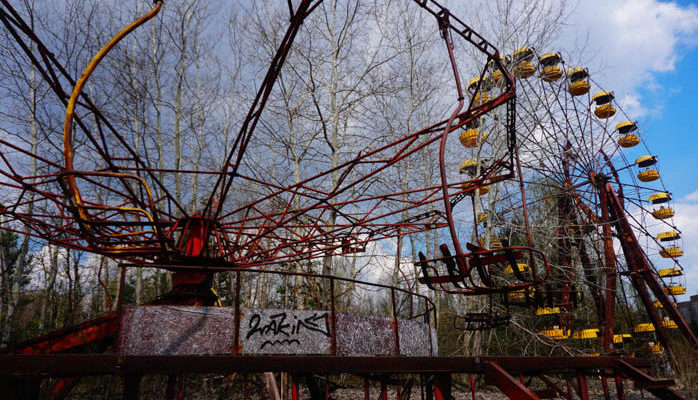
3 Amazing things to do in Kiev
1. Fall in love with stunning architecture
Admittedly, Kiev has its fair share of Soviet monstrosities. But, interspersed with concrete apartment blocks you will find an astonishing array of splendid architecture. From crumbling pastel wedding cake style buildings to the imposing beauty of the Stalin baroque buildings on Khreshchatyk street, there are plenty of buildings to impress.
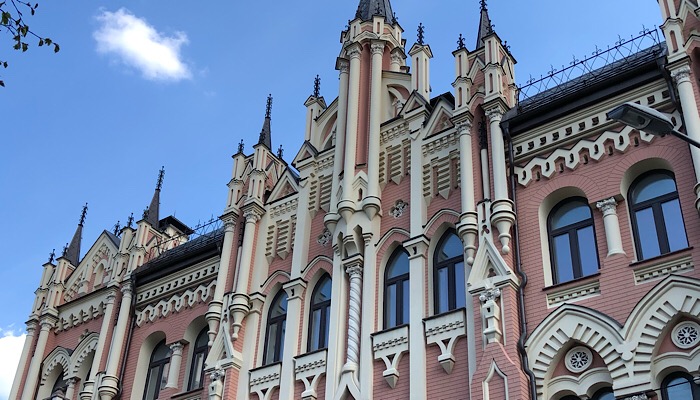
Astonishingly, it has all been constructed in the post-war era as the entire old town was destroyed in the Second World War. Today the city seems to be going through a Renaissance, as though on a mission to slowly eviscerate any reminders of Soviet dominion. Who can blame them considering some of the suffering inflicted on the local population by the old communist leaders?
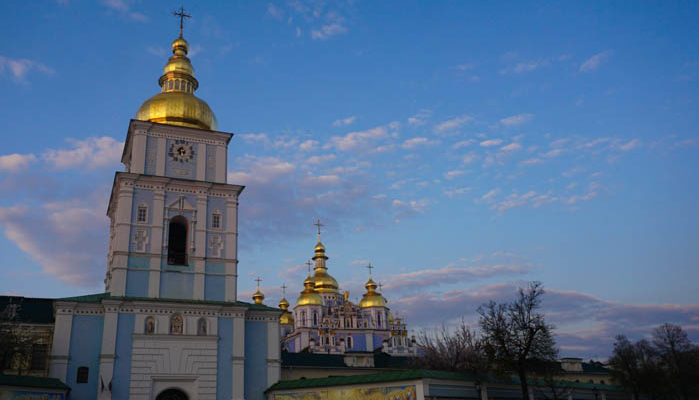
New shimmering skyscrapers sit side by side with abandoned buildings, propped up by scaffolding, their windows boarded as though to hide their secrets of frivolous parties and pre-war heroics. If you take the time to look upwards, you will spot endless elaborate facades with decorations resembling the icing on wedding cakes. Their pretty colours fade and peel in the sun, a sorry reminder of the travesties wrought on Kiev.
Incredible tourist icons
That’s before you even take note of the many big-ticket attractions such as St Sophia’s Cathedral (housing the largest collection of frescoes in the world), the Golden Monastery, St. Andrews Cathedral, and oversized sculptures such as that of the Rodina Mat which rises 102 metres from its base to the top of the statue.
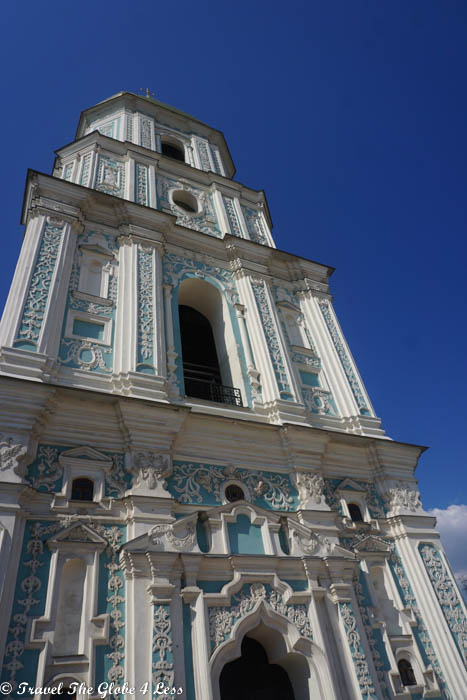
2. Discover Kiev’s tragic history
Ukraine has a turbulent history but it’s hard to imagine as you bask in the sun and admire majestic mansions and extensive construction works which transform the downtown into a modern high rise metropolis.
In less than a hundred years Kiev has suffered invasion, multiple occupations, forced starvation and revolution, not to mention the world’s largest nuclear disaster.
The country’s access to fertile flatlands, the shores of the Black Sea, and the rivers of the Dnipro, means this region has been a target of Turks, Greeks, Austrians and Russians for centuries. But in the last century, Kiev has suffered insurmountable horror.
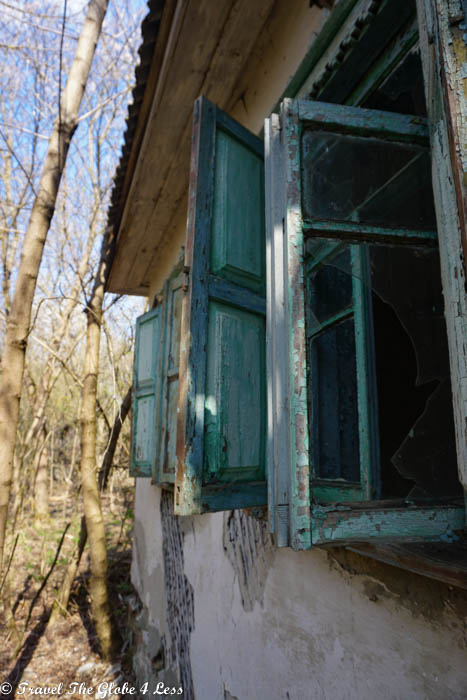
Holodomor
On our tour of the city, I discovered the disturbing story of the Holodomor. In retaliation for their fierce determination to resist agricultural collectivization, the Soviets instigated a man-made famine. This inhumanity killed an estimated 4 – 5 million Ukrainians between 1932 and 1933. Ukrainians were reluctant to sacrifice their private land and work on state-owned farms, so Stalin ‘aimed to crush any aspirations of independence’ with blockades that restricted the flow of food.
Up to 30,000 Ukrainians a day were dying from starvation, yet Stalin continued to ‘export millions of tons of grain, more than enough to have saved every starving man, woman and child’.
It’s hard to conceive of such evil, and yet these figures do not include the half a million people who were ‘dragged from their homes, packed into freight trains, and shipped to remote, uninhabited areas such as Siberia where they are left, often without food or shelter.
A memorial to this terrible genocide is high above the Dnipro river by the Arsenalna Metro station.
Babi Yar
The Soviets and the Germans were responsible for more brutal events during World War II. Just ten days after the Nazis occupied Kiev in 1941, mass executions of Romani, Jews and Ukrainian nationalists commenced. Nazis unceremoniously herded over 34,000 Kyivan Jews into a ravine in Babi Yar on the outskirts of the city where they were coldly executed. The executions continued until the Soviets liberated the city, by which time over 120,000 people had perished in this barbaric way.
This harrowing video is reminiscent of scenes from the Killing Fields in Cambodia. I literally felt sick to my core watching the indiscriminate brutality and disregard for human life.
The destruction of Kiev
At the same time, the Soviet Red Army was determined to destroy many of the city’s buildings which were supposedly occupied by Germans. They used new remote-controlled explosive mines which they planted in over 200 buildings around the city. Many were residential and the explosions caused innumerable civilian losses as well as the slaughter of hundreds of German troops.
Regarded as the ‘largest terror operation in the world’s history’ the city’s main street of Khreshchatyk was virtually obliterated.
Revolution of Dignity
Fast forward to more recent times, and more bloodshed. Initially, protesters in November 2013 were simply calling for rapprochement with Europe from Viktor Yanukovych’s administration. An unprovoked attack on sleeping protesters fuelled the movement and by December a mass student protest had emerged.
Violence escalated over the following months. The president introduced more extreme laws and brutal clashes with the police became more frequent. Scenes on TV highlighted demonstrations on Maidan square, whilst fires raged and Molotov cocktails soared. Over a hundred people died during the revolution which culminated in a bloodbath on February 20th 2014. As bullets flew, Maidan Square was transformed into a veritable killing field. One day later, the president fled to Russia and a shell-shocked nation tried to resurrect democracy.
Chernobyl
The site of the largest nuclear disaster on the planet, Chernobyl offers a fascinating insight into a series of errors and Soviet arrogance. As you explore modern-day ghost towns, it’s hard not to feel sad for the people whose lives were devastated by the events of that fatal night in April 1986.
32 hours after the accident, with less than an hours notice, they had to leave with only basic possessions. 1,300 buses drove them from the area to host them with unwilling families. Later they moved into new city apartment blocks far from the life they had known.

We took a day one trip to Chernobyl which I highly recommend. It is a tour like no other. Tourist numbers are on the rise, but if the decay accelerates, it may soon be impossible to explore. Go now!!!
3. Indulge in great value food and drink
Prices in Kiev are extremely reasonable. A couple can eat out, including two to three beers, for around £20 in a non-fancy restaurant. A 0.5l beer costs around £2, and hot dogs from stands around the city about a £1. Your money definitely goes further here than in many other European cities.
Here are some typical costs:
- Subway fare – 8 (25p)
- Airport train – 80 (£2.50)
- Large water – 10 (30p)
- Hot dog – 30 (£1)
- Latte – 40 (£1.20)
Maybe you have other ideas?
Have you visited Kiev and have ideas you would like to share. Feel free to pop them in the comments as I would love to hear from you.
 From Miles to Smiles Stylish travel for professionals seeking luxury at affordable prices
From Miles to Smiles Stylish travel for professionals seeking luxury at affordable prices
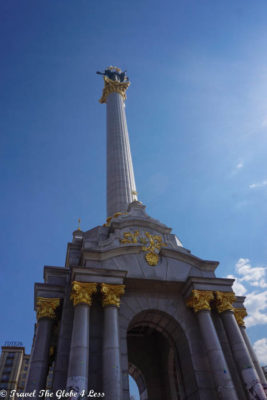
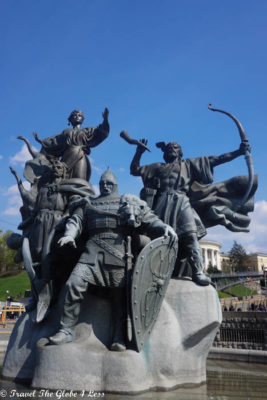
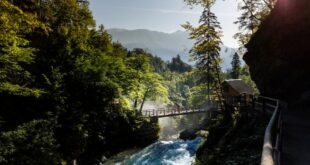

Dear God, there has been some horrendous suffering there. What is astonishing to me is that anyone can take part in such brutal mass slaughters like Babin Yar (which I was sadly unaware of until now).
And to have it followed by the Killing Fields within living memory, never mind the other conflicts in Africa and India/ Pakistan beggars belief.
I’ve bookmarked the Netflix film and will watch that later.
Kind of puts the Brexit thing into perspective…
Thanks for another very illuminating blog – travel can often be far more than pretty sunsets and Pina Coladas
I know I’d never heard of it either. Astonishingly one of the things that I also discovered is that until very recently there was no monument in Ukraine for BY and yet there are tons around the world. A totally fascinating place and one I will definitely be revisiting!
Thanks for this guide around our beautiful city, Anne. Really good article, and happy you liked it here 🙂 But we really like when people call our city Kyiv, not Kiev. Not a big difference, but Kiev is a transcript from Russian, and Kyiv – from Ukrainian 🙂
Thanks once again!
Hi Boryslav, I’m glad you enjoyed it and will update the city name in due course. I definitely don’t want to cause any offence.
That’s good to know, Boryslav – I’ve never seen it written as Kyiv before in my more-than-50 years on this planet.
No idea if it is an Anglicisation of the Soviet/Russian spelling or an old Imperial (British Empire) thing, like Bombay and Peking.
Two interesting things to note – I thought a ‘Kyivian Jew’ was either a branch of the religion or a typo – turns out it’s neither!
And, secondly, Google Chrome spell checker doesn’t recognise ‘Kyiv’… although I’ve now added it to my dictionary in Chrome and my phone. I will use it from now on!
(Hope you’re not winding us up 😁)
Simon I love your curiosity. It’s definitely not a wind up as many of the signs did say Kyiv. Of course lots of overseas city names get changed once they are in English such as Florence (Firenze), Rome (Roma) Venice (Venezia) and Munich (Munchen).
Well, in fact this is something that is changing now. Since our country was a part of USSR and all the names were always written in Russian, only now we have strong movement for national identity and trying to identify ourselves as Ukrainians, not ex-USSR or Russians. Ukrainian language is now restoring as previously majority of Ukrainians were speaking Russian (due to a long term enforcement of soviet regime to destroy any national identities including languages) Thus we have lot’s of places even in Ukraine where it says “Kiev” still, but we have a strong campaign to change that both inside and outside the country. I know that several international airports are using Kyiv already as well as some services like Google in some areas (I have my cellphone set to English and it says my location is Kyiv)
We even have a hashtag for that – #KyivNotKiev
I mean this question is not a problem, but it’s just something we are trying to change and I wanted to share it with you guys 🙂
Just a quick read regarding this in our local media:
https://www.kyivpost.com/ukraine-politics/kyivnotkiev-campaign-asks-foreign-media-to-change-their-spelling-of-ukraines-capital.html?cn-reloaded=1
Have a good day and thanks again for the article!
Hi there, thanks for sharing this. This is the joy of travel in that it allows us to better understand this stuff through first hand experience. My husband and I had picked up on the different spellings and were curious but did not come across anything whilst researching this post to shed any further light on the matter so I appreciate you taking the time to provide this insight.